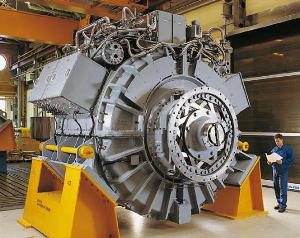
An electric motor always operates through principles of electromagnetism. A magnetic field, generated by an electric current, causes a drive wheel to spin, which imparts motion through a drive train to some instrument or other. This motion can drive a car, work a pump, spin the rotor on a boat, work a garbage disposal, or whatever.
The two main types of electric motor are the induction motor (which uses electromagnets in both parts of its operation) and the permanent magnet motor, which uses permanent magnets instead of magnetizing field windings. A permanent magnet is one that retains its magnetism without a magnetizing current being run through it artificially. The electrical configuration of a permanent magnet motor is less complex than with an induction motor.
It runs cooler, is more efficient in terms of energy loss, powers up to maximum speed more quickly, and is capable of running at a higher speed than an induction motor. It also takes up less space for a given power. On the downside, a permanent magnet motor is more expensive to construct due to the costly materials that go into making the permanent magnets.
Uses For Permanent Magnet Motors
Permanent magnet motors are preferred in a number of applications. One of these is the making of production machinery and precision machine tools. This is because of their greater reliability, efficiency, compactness, and potential rotary speed. With the development of machine-
Permanent magnet motors are used extensively in manufacturing, where tight control, high speed, small size, and efficiency are more valuable than savings in the cost of equipment.
Permanent Magnet Motors & Electricity Generation
A variant on the permanent magnet motor is the permanent magnet generator. A generator uses the same principle as an electric motor, but runs the process in reverse. Instead of starting with an electric current and using electro-
by the wind as with a wind power turbine. Not all generators are made with permanent magnets; however, that is a common design in use for home power generation from wind turbines.
As in all permanent magnet motor applications compared to induction motor designs, the trade-
Permanent Magnet Motors And “Free Electricity”
Because permanent magnets exhibit a source of motion that seems to come from nowhere and be inexhaustible, it naturally gives rise to the idea of producing electricity from the ambience, or from the Earth’s magnetic field. Unfortunately, no significant power production from this method has ever been demonstrated, nor is there theoretical justification for the concept in any known principles of physics. The Earth’s magnetic field does involve a significant amount of energy, but it is mostly a static field that cannot be used to generate usable energy. The fluctuations in the Earth’s magnetic field rather than the field per se would have to be the source of the power, and that is a much smaller source to the point of inutility.
